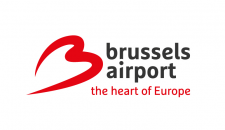Traffic results February 2014
Strong growth continues
In February 2014, Brussels Airport recorded a 3.1% growth in passenger numbers compared to February 2013. Growth was tempered by the particularities of the calendar: in 2014 the half-term holiday departures rush was spread over February and the first days of March, whereas last year it took place entirely in February. Growth in February was strongest in the transfer segment where passenger numbers increased by over 25%.
Passengers
Growth in passenger figures was driven mainly by the intra-European scheduled services segment, a segment in which Brussels Airlines is doing particularly well. Low-fare airlines are also performing strongly. The start of Ryanair’s operations out of Brussels in the last two days of February already has a limited impact on this result. Long-haul traffic continues to grow with several airlines increasing frequencies, and operating larger aircraft on their Brussels routes.
Aircraft movements
While the number of flights decreases by 1.7%, the number of seats offered remains all but status quo. Growth in passenger numbers is once again driven by the use of larger aircraft and a considerable improvement of the seat load factors.
Cargo
In February cargo figures continue to recover with a growth of over 8% on the previous corresponding period. Growth is driven mainly by the strong performance of DHL. Belly cargo on board of passenger aircraft is also recovering. Full-freighter airlines however are still suffering from the crisis and the lower cargo prices and continue to cut flights.
Network
The network from Brussels Airport for the 2014 summer season includes 15 new destinations. Never before were so many new destinations opened in one year’s time. The number of passenger destinations now totals 204. New trans-Atlantic destinations include Charlotte and Miami, and in Europe London Gatwick, Newcastle, Bari, Cagliari, Venice/Treviso, Montpellier, Seville, Santiago de Compostela, Gdansk, Krakow, Wroclaw, Thessaloniki and Split.


